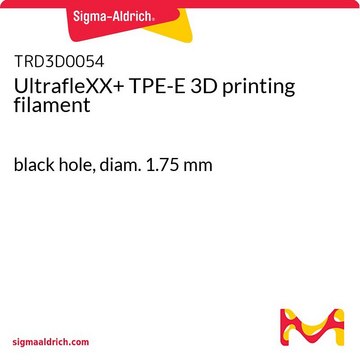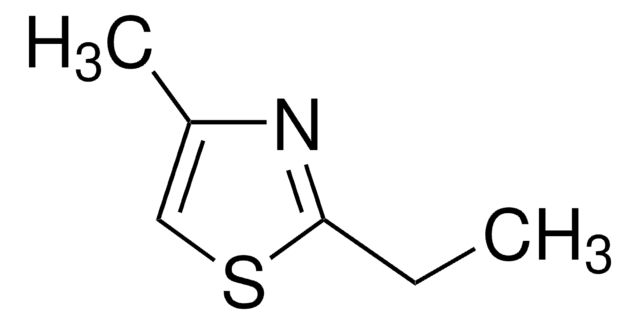W354503
Ethyl 3-hydroxyhexanoate
≥98%, FG
Sinonimo/i:
3-hydroxyhexanoic acid ethyl ester, Ethyl 3-hydroxy caproate
About This Item
Prodotti consigliati
Origine biologica
synthetic
Livello qualitativo
Grado
FG
Fragrance grade
Halal
Kosher
agenzia
follows IFRA guidelines
meets purity specifications of JECFA
Conformità normativa
EU Regulation 1223/2009
EU Regulation 1334/2008 & 178/2002
Saggio
≥98%
Indice di rifrazione
n20/D 1.428 (lit.)
P. ebollizione
90-92 °C/14 mmHg (lit.)
Densità
0.974 g/mL at 25 °C (lit.)
applicazioni
flavors and fragrances
Documentazione
see Safety & Documentation for available documents
Allergene alimentare
no known allergens
Allergene in fragranze
no known allergens
Organolettico
grape; green; citrus; fruity; sweet
Stringa SMILE
CCCC(O)CC(=O)OCC
InChI
1S/C8H16O3/c1-3-5-7(9)6-8(10)11-4-2/h7,9H,3-6H2,1-2H3
LYRIITRHDCNUHV-UHFFFAOYSA-N
Categorie correlate
Descrizione generale
Applicazioni
- Novel Antiviral Activity of Ethyl 3-Hydroxyhexanoate Against Coxsackievirus B Infection.: Discusses the potential antiviral properties of Ethyl 3-hydroxyhexanoate, positioning it as a candidate for therapeutic use against Coxsackievirus, with implications for pharmaceutical applications and virology (Olasunkanmi et al., 2022).
- RIFM fragrance ingredient safety assessment, ethyl 3-hydroxyhexanoate, CAS Registry Number 2305-25-1.: A comprehensive safety assessment of Ethyl 3-hydroxyhexanoate used in fragrance formulations, emphasizing its toxicological profile and safe usage in consumer products (Api et al., 2020).
Codice della classe di stoccaggio
10 - Combustible liquids
Classe di pericolosità dell'acqua (WGK)
WGK 3
Punto d’infiammabilità (°F)
201.2 °F - closed cup
Punto d’infiammabilità (°C)
94 °C - closed cup
Dispositivi di protezione individuale
Eyeshields, Gloves, multi-purpose combination respirator cartridge (US)
Scegli una delle versioni più recenti:
Possiedi già questo prodotto?
I documenti relativi ai prodotti acquistati recentemente sono disponibili nell’Archivio dei documenti.
Articoli
It seems that more and more consumers are demanding fragrance-free products, be it for household cleaning or personal care. Some believe that in doing so, they are purchasing a more natural product.
Il team dei nostri ricercatori vanta grande esperienza in tutte le aree della ricerca quali Life Science, scienza dei materiali, sintesi chimica, cromatografia, discipline analitiche, ecc..
Contatta l'Assistenza Tecnica.








